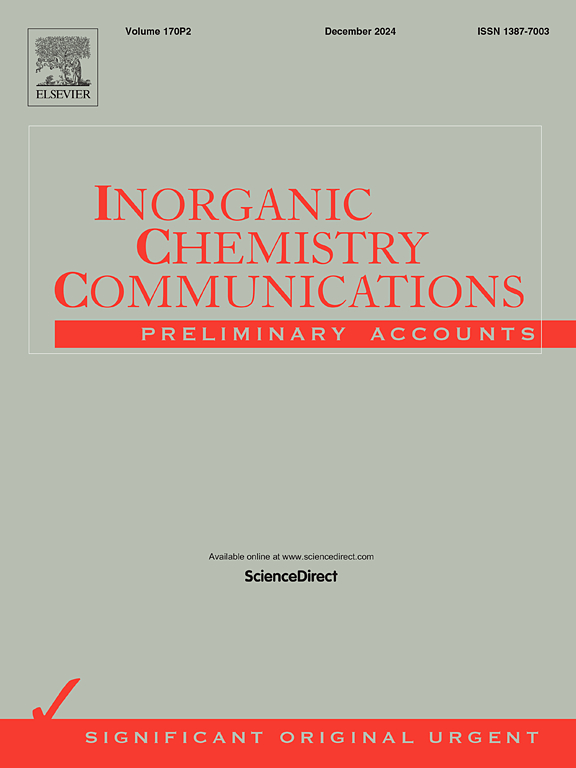Citrus hystrix peels derived carbon dots based colorimetric and ratiometric fluorescent sensors for highly selective detection of Al3+ in the presence of Zn2+ in water and processed food
IF 4.4
3区 化学
Q1 CHEMISTRY, INORGANIC & NUCLEAR
引用次数: 0
Abstract
Carbon dots (CDs), synthesized from Citrus hystrix peels, exhibited maximum fluorescence emission at 420 nm when excited at 330 nm. Along with Quercetin (QT), the CDs quenched the emission at 420 nm upon the addition of aluminium (Al3+) ions and the combination also yielded a new strong emission peak at 480 nm. The intensity of the emission peak at 480 nm increased with the increase in Al3+ concentration which is accompanied by a visible colour change of the solution from colourless to yellow. The formation of QT-Al3+ complex in the system results in the Inner Filter Effect (IFE) causing the change of blue fluorescence emission to green. Herein, a ratiometric fluorescent sensor has been constructed using CD-QT system which exhibits a great potential towards selective determination of Al3+ by overcoming the limitations possessed by single wavelength detection probes. The proposed sensor detects Al3+ over a wide range of 5–550 µM with the lowest detection limit of 0.695 µM. Also, this sensor hardly shows any vulnerability towards the most possible interfering Zinc ions and other potential metal ions. The proposed method has been successfully applied for the determination of Al3+ leached from aluminium food wrapper and cooking utensil with high selectivity. Excessive leaching of Al3+ into food has been evidenced while cooking in acidic conditions using this sensor. The fabricated fluorescent sensor has been used to detect Al3+ in sediments collected from large scale wheat storage warehouses, where aluminium phosphide is used as fumigant for pest control.

求助全文
约1分钟内获得全文
求助全文
来源期刊

Inorganic Chemistry Communications
化学-无机化学与核化学
CiteScore
5.50
自引率
7.90%
发文量
1013
审稿时长
53 days
期刊介绍:
Launched in January 1998, Inorganic Chemistry Communications is an international journal dedicated to the rapid publication of short communications in the major areas of inorganic, organometallic and supramolecular chemistry. Topics include synthetic and reaction chemistry, kinetics and mechanisms of reactions, bioinorganic chemistry, photochemistry and the use of metal and organometallic compounds in stoichiometric and catalytic synthesis or organic compounds.
 求助内容:
求助内容: 应助结果提醒方式:
应助结果提醒方式:


